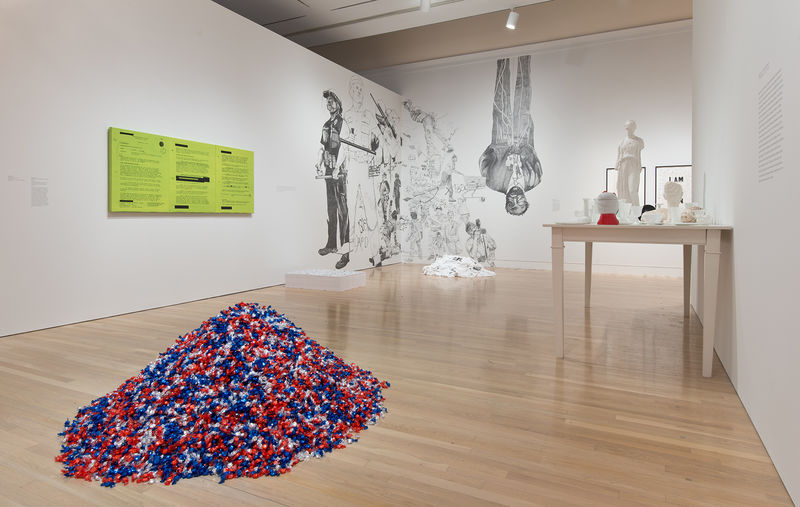
Rirkrit Tiravanija
Rirkrit Tiravanija was born in Argentina but grew up in Thailand, and his Thai roots have provided inspiration for his inventive art practice since the late 1980s. Tiravanija has noted that the Thai proclivity for communal living has influenced his thinking about making art, as evidenced by his many works that involve participants. Whether preparing curry for hundreds of guests, establishing a self-sustaining rice farm in Thailand, or providing a structure within which visitors are encouraged to do anything they wish, he is constantly challenging the defining features of art. Like the actions and happenings developed in the second half of the twentieth century by artists associated with movements like new realism, Fluxus, and feminism, Tiravanija's work provides alternative physical and ideological structures in which people are invited to operate, and it has been described as exemplifying "relational aesthetics."# Addressing social conditions in environments that often forgo the artificial boundaries between art and life, Tiravanija approaches art as a platform for collaboration and discussion.
In 2008 the Drawing Center in New York hosted an exhibition of Tiravanija's work comprising more than two hundred works on paper. The drawings all depicted contemporary scenes of protest from around the world. Even though demonstrations addressing current civil liberties issues such as immigrant and gay rights as well as the contemporary peace movement occur regularly around the country, the media coverage of such events is relatively sparse. As a result, the culturally held notion of what political protest might be is largely centered on the antiwar and civil rights movements of the 1960s and 1970s. Culled from multiple international news sources, the images in Tiravanija's drawings give the lie to the idea that political demonstrations are the stuff of history. Commissioned by Tiravanija and drawn by Thai artists, many of whom are his former students, the Demonstration Drawings show the ongoing human desire for equality and fairness and the need to speak truth to power. The very act of their making is a parallel event: just as the protesters march together for a common goal, a critical mass of artists is brought together for a specific purpose. In the end, the documentation of the protesters' efforts is lasting evidence of their existence.

—Corrina Peipon


